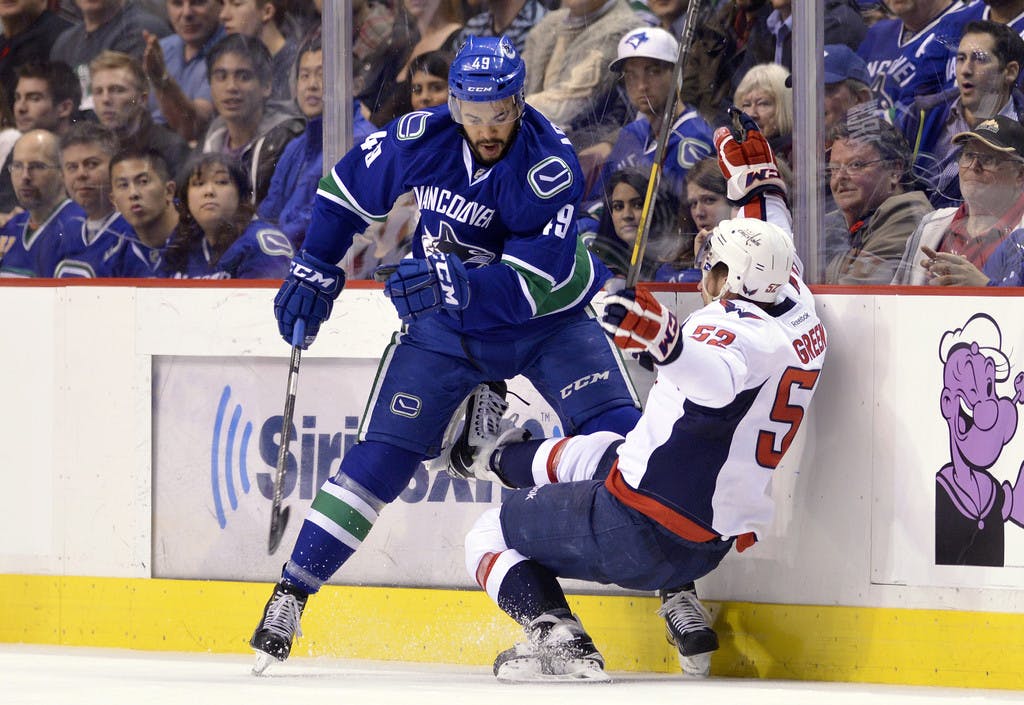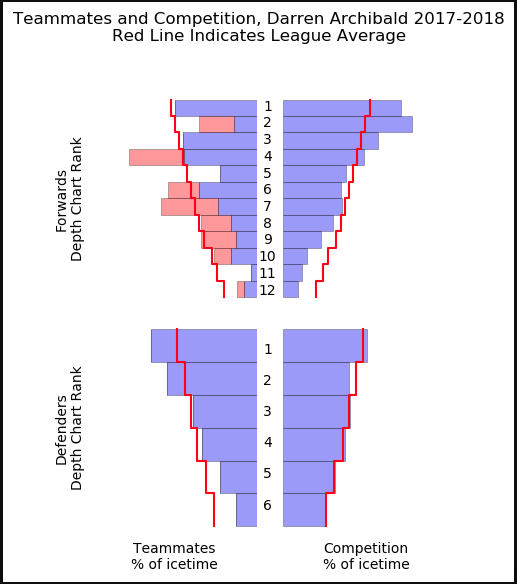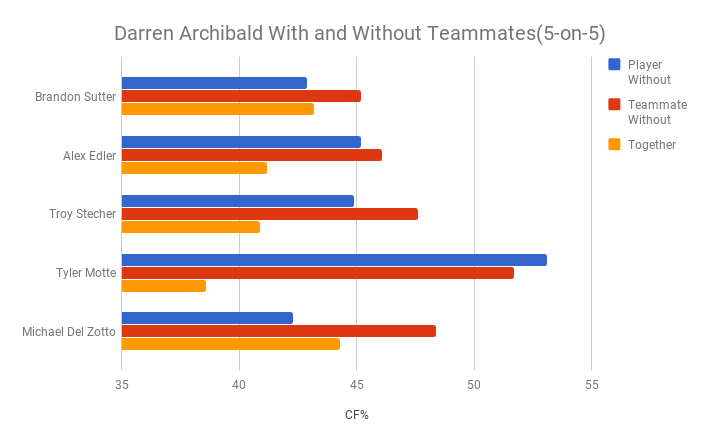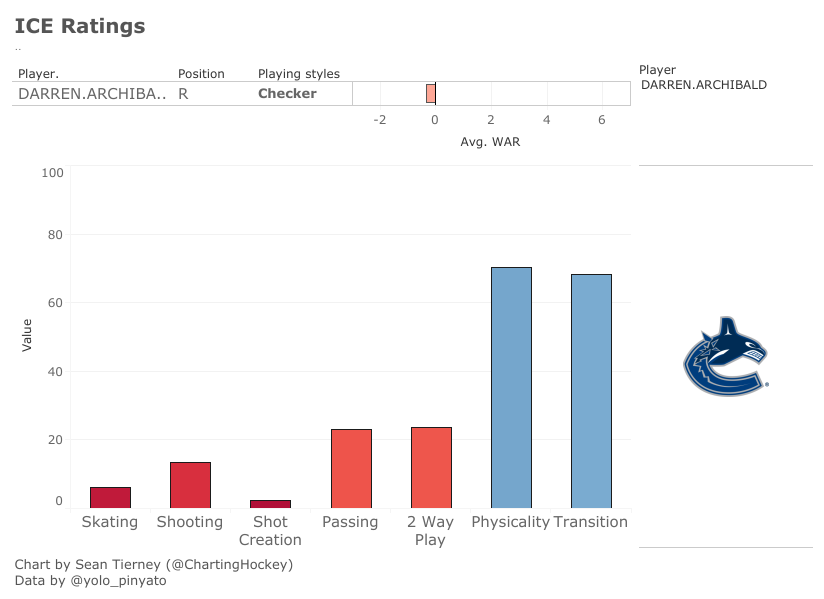Canucks Army Year in Review: Darren Archibald

By Harman Dayal
5 years agoIt’s often said that sorting by most hits on a team should find you the worst possession players. After all, you have to be chasing the puck to actually make a hit in the first place.
Darren Archibald proved that theory true for the Canucks; leading the club’s eligible forwards with three hits per game whilst also owning the worst Corsi for percentage on the team.
Such a performance may have been acceptable last season because of the missing grit and toughness in the lineup following the retirement of Derek Dorsett, but with the likes of Antoine Roussel, Jay Beagle and Tim Schaller joining the fold, Archibald is surely on the outside looking in on a roster spot for the 2018-19 campaign.
| Player | GP | G | A | P | CF% |
| Darren Archibald | 27 | 4 | 5 | 9 | 43.1 |
It’s probably for the best if he is squeezed out because if the underlying numbers are any sign, he doesn’t offer much in the way of tangible on-ice contributions.

Vancouver was buried by shot attempt, scoring chance and expected goal shares alike with the journeyman forward deployed.

Archibald finished last or second to last among Canucks’ forwards by each of the metrics seen above.
The caveat in all this was that he faced atypical deployment for a fourth-line forward — seeing a higher proportion of his ice-time against the other team’s best players as part of his shutdown duties alongside Brandon Sutter.

Visualization by Micah McCurdy
By this virtue, it’s fair to wonder if it was the difficult role rather than lacking individual play that conspired to undermine Archibald’s performance. In all likelihood, it’s a combination of both, although his numbers away from Sutter tell us that he struggled irrespective of deployment.

Perhaps most concerning is that he had a notably adverse effect on his teammates’ ability to control shot attempts.

Archibald dragged Canucks’ skaters down by almost 6% with respect to managing the shot clock — a mark that was by far the worst among the team’s forwards.
It shouldn’t come as a surprise to learn then that Archibald was labelled as a below replacement level forward.

Data based assessment from the chart above reveals that the 28-year-old’s foundational tools are a notch below par for the NHL. In other words, Archibald’s lacking two-way profile negates the value gained from his physical presence and transition contributions.
More specifically, the team failed to create offence with Archibald deployed.

Viz by Micah McCurdy
Among forwards that played at least 300 five-on-five minutes, only five in the league had lower expected on-ice goals for rates.
Unfortunately, it’s difficult to discern exactly how much of that ineffectiveness was Archibald’s own doing. On the surface, it appears he did his part; registering nine points in just 27 games, though a deeper look into the contextual factors leaves you asking questions.
For starters, three of his five assists were secondary contributions — secondary assists, of course, being an unrepeatable skill due to its random nature. It also doesn’t bode well for Archibald that his four goals came on the back of a shooting percentage north of 14%.
I’m sure many of you expected some degree of luck to be involved given his limited scoring resume dating back to junior, but it’s imperative that we present the facts anyway.
Moving forward, I can’t imagine Archibald factoring into the main roster barring a string of injuries. In players like Roussel, Beagle and Schaller, the organization has similarly physical players with superior two-way skillsets.
Recent articles from Harman Dayal





